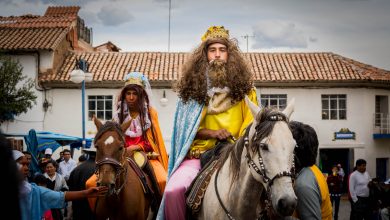
Ollantaytambo is the only Inca town that continues to be inhabited. Its streets still preserve Inca stone work combined with temples and colonial plazas. It is said that the Inca Pachacutec was the one who ordered built this beautiful city. It is known as the “Living Inca City” due to its great traditions inherited from its ancestors.
Within all these traditions we have the feast of the Lord of Choquekillka that is celebrated every year from the second week of June. This festivity was proclaimed Cultural Heritage of the Nation in 2008 and is a clear example of the syncretism between Catholic and Inca traditions and beliefs.
In this fiesta you can see beautiful folkloric dances, typical foods, and rituals. During all this activity Ollantaytambo’s streets are filled with celebrations and a long procession accompanied by more than 15 folkloric groups and dancers dressed in different costumes.
This festivity begins on Saturday with the dancers parading through the main square of the city of Ollantaytambo. Then the Lord of Choquekillka is taken from the church in the square to be processed through the streets to the temple of Santiago Apóstol. This walk is followed by dancers and folkloric groups, and is received by many believers with celebrations and fireworks. Upon reaching the chapel, the Lord is greeted by the authorities’ and then enters the chapel and starts the subsequent festivities.
Sunday is the central day of this fiesta which begins with a mass at 10 in the morning and then continues with a procession through all the streets accompanied by musicians, believers, and comparsas.

The Señor de Choquekilla is a fiesta that is not as well known as the Inti Raymi or the Virgin of Paucartambo but it has become one of the most important celebrations in the Sacred Valley due to its great religious manifestation which also represents a social model that has encouraged the life in these communities through the ties of solidarity and kinship connected with a common memory.
Photo Reference




